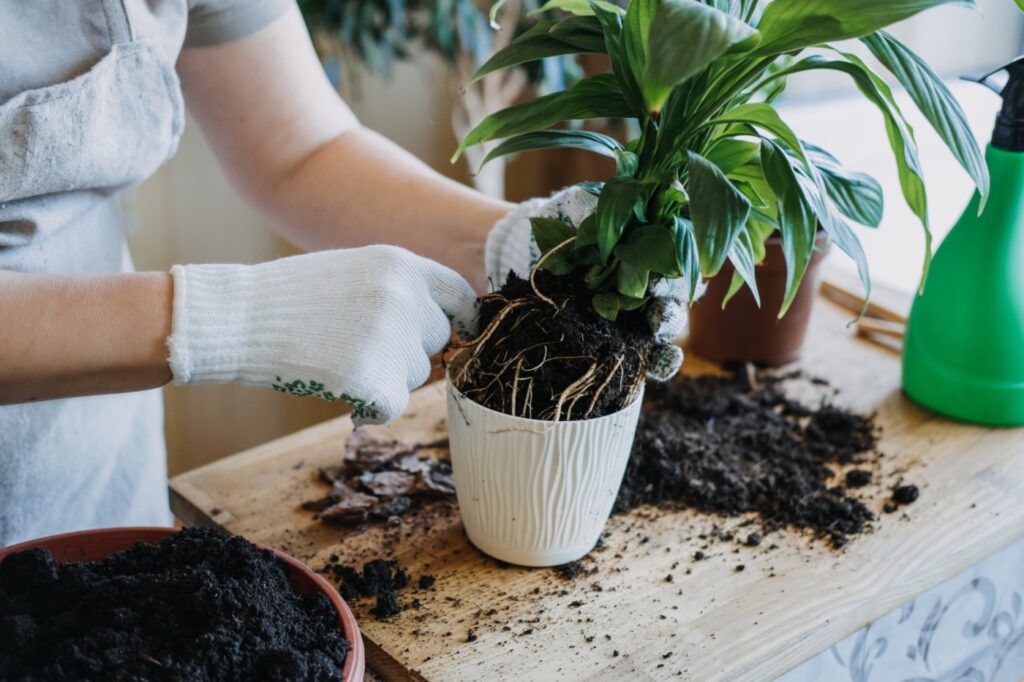
Q. When should I repot my houseplants? Is there anything I should know before I start?
A. When your indoor plants start growing again, usually in the early spring when the days become longer, it’s time to give them some attention. Tip the plant out of its container and look at the roots. Have they filled the container? Are they circling? Coming out of the drainage holes? If you answer “yes” to any of these questions, it’s time to move your plant to a larger container.
When potting up, select a container that is only slightly larger. For instance, you would move a plant from a 6-inch pot into an 8-inch pot. Relocating into a much larger container will cause problems including root rot from inadequate drainage.
If the roots look crowded or are circling, try to gently separate them. Extreme circling roots can be trimmed and unwound. Use fresh potting soil and a slow-release fertilizer like Osmocote when filling the pot. If using a systemic pesticide, now is a good time to dose with that to get a jump on aphids, mites, and mealybugs.
You may be tempted to put your indoor plants outside once the weather gets warm and sunny. This can result in severe sunburn and, in extreme cases, defoliation (loss of all leaves). Even plants that have been brought inside for winter protection should be gradually acclimated to direct sunlight. Think about your first sunburn of the season – this is how your plant feels when it’s brought outside for too long.
Q. My citrus trees have been super productive and I don’t know what to do with all of the fruit. I was thinking about canning some of the juice, but I can’t find any canning recipes for citrus juice. Why is that?
A. Citrus will lose its flavor when exposed to high temperatures. Citric acid is the key component of citrus’ tart flavor, but it breaks down at 175 degrees. When a recipe calls for citrus juice, it almost always instructs you to add it immediately before serving. If citrus is heated to a high temperature for too long, it can impart a bitter flavor or cause discoloration.
What about commercially prepared citrus juice? To ensure shelf stability, it has to either be pasteurized or heat processed. Since the juice has lost its flavor, flavoring agents must be added after the fact.
Marmalade is another alternative, but I shudder to think about how many jars I could get out of 100 pounds of oranges.
If you have a glut of citrus (and you’ve given so much of it away that your neighbors run away when they see you coming with another bagful), you can freeze the juice since that will preserve the flavor. Grated zest can be frozen as well and added into recipes at a later date. Dried orange slices seemed to be a popular Christmas decoration last year. Perhaps this trend will still be around next Christmas and you can get a head start on your decorations!
Los Angeles County
[email protected]; 626-586-1988; http://celosangeles.ucanr.edu/UC_Master_Gardener_Program/
Orange County
[email protected]; 949-809-9760; http://mgorange.ucanr.edu/
Riverside County
[email protected]; 951-683-6491 ext. 231; https://ucanr.edu/sites/RiversideMG/
San Bernardino County
[email protected]; 909-387-2182; http://mgsb.ucanr.edu/
